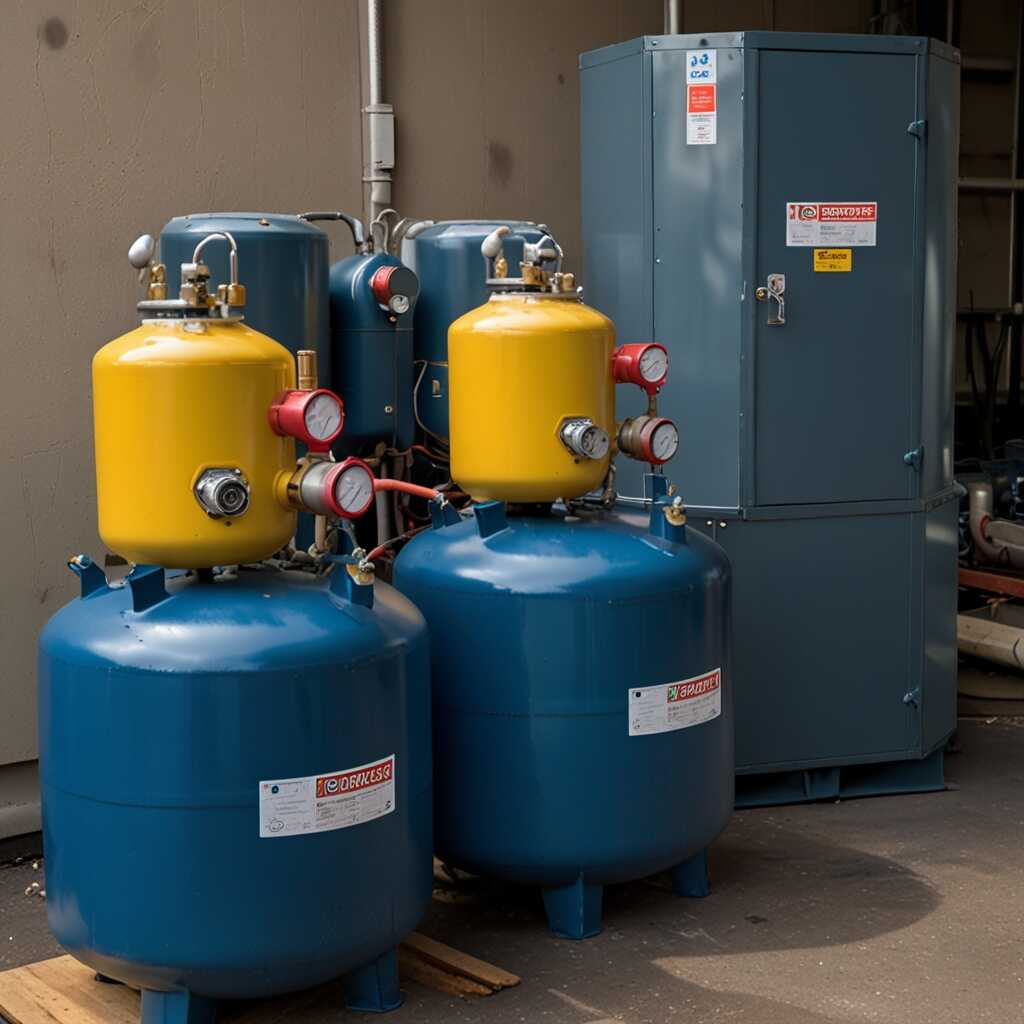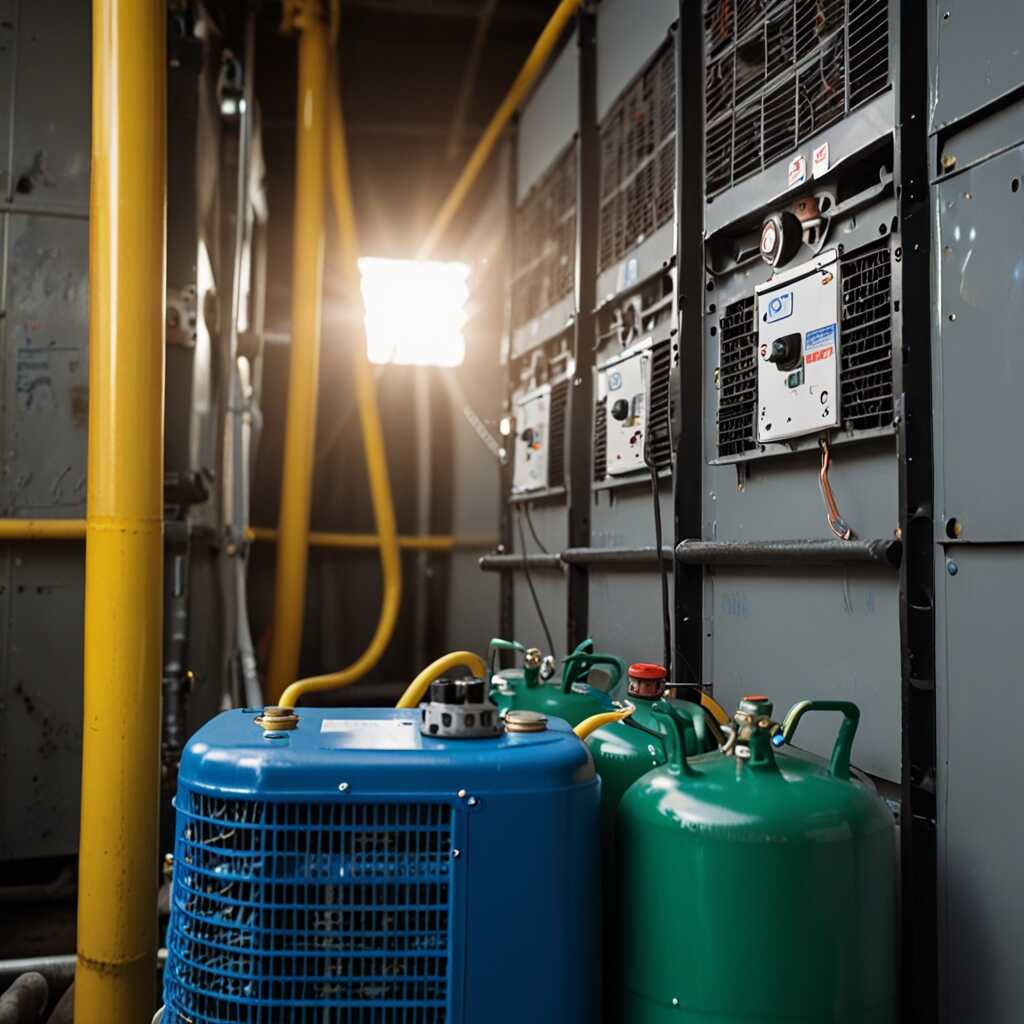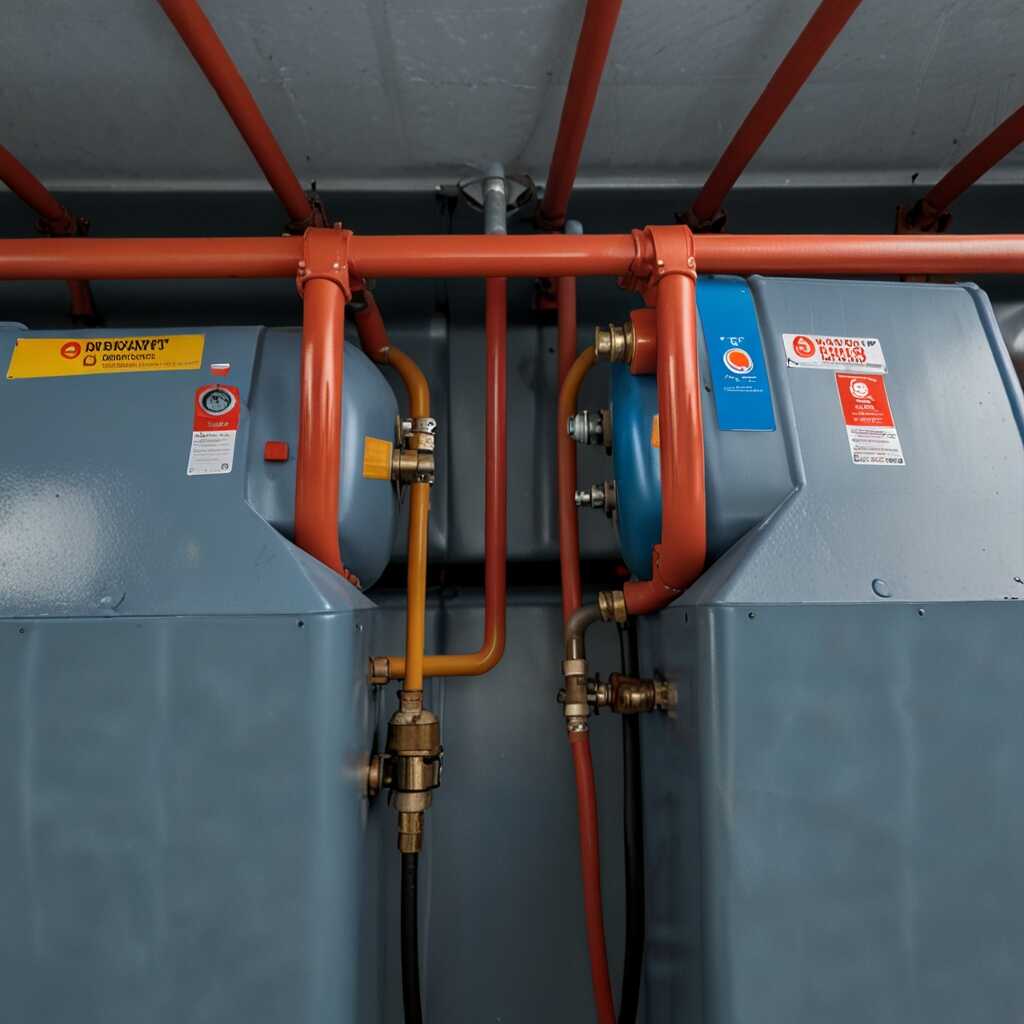Direct liquid recovery capabilities significantly enhance the efficiency of refrigerant machines, particularly in HVAC systems. These capabilities allow for faster and more effective refrigerant recovery, reducing waste and improving compliance with environmental regulations. Refrigerant Recovery Pro emphasizes the importance of adopting these advanced methods to ensure optimal performance and sustainability. By understanding how direct liquid recovery works, HVAC professionals can achieve better results and support regulatory best practices.
Introduction to Direct Liquid Recovery in Refrigeration Systems
Direct liquid recovery refers to a method that allows for the extraction of liquid refrigerant directly from the system. This method is essential for maintaining the efficiency and performance of refrigerant machines. In HVAC systems, effective recovery using direct liquid recovery enhances performance by ensuring more refrigerant is captured during service. Many HVAC professionals are curious about how this method can improve system reliability and compliance with environmental regulations. The effectiveness of direct liquid recovery methods can allow up to 90% or more of refrigerant recovery, making a significant difference in performance.
Benefits of Direct Liquid Recovery for HVAC Professionals
Direct liquid recovery provides HVAC professionals with a reliable way to improve the overall efficiency of refrigeration systems. By minimizing refrigerant loss during recovery, technicians can ensure that systems operate at optimal levels. This method enhances system performance and allows for better compliance with EPA regulations. Direct liquid recovery systems often include advanced features like automatic shut-off and capacity monitoring, which enable rapid recovery of refrigerants. With tested reliability and proven results, these systems reduce service times and improve job site productivity, making them a great investment for professionals who value efficiency and quality in their work.
Advantages of Direct Liquid Recovery for HVAC Equipment Performance
Direct liquid recovery offers substantial benefits for HVAC equipment performance. This method ensures improved efficiency by allowing refrigerants to be reclaimed more effectively. Efficiency gains can exceed traditional methods, leading to significant energy savings for systems. Additionally, enhanced reliability is a key aspect, as direct liquid recovery minimizes compressor wear and tear. Users can expect better overall performance as well as compliance with environmental regulations. Research indicates that systems utilizing direct liquid recovery can enhance performance levels by up to 20% compared to older methods.
Direct Liquid Recovery vs. Traditional Recovery Methods
Direct liquid recovery provides distinct advantages over traditional recovery methods. Traditional methods often lead to residual refrigerants, which affects system performance and increases environmental risks. Direct liquid recovery easily removes liquid refrigerants from the system, ensuring a complete reclaim process. This enhances the reliability of HVAC systems by reducing the likelihood of compressor cycling. Furthermore, direct liquid recovery units are designed with features that improve efficiency and ease of use. They can handle various refrigerants effectively, which is essential for HVAC professionals aiming for optimal performance and regulatory compliance.

Energy Efficiency Improvements and Financial Benefits
Direct liquid recovery enhances energy efficiency in HVAC systems by reducing refrigerant loss and ensuring optimal performance. This technology improves operational efficiency, which translates to lower energy consumption. HVAC professionals can easily measure financial benefits through energy savings and reduced refrigerant replacement costs. Studies show that implementing direct liquid recovery systems can mitigate refrigerant loss by as much as 90%, making significant contributions to cost reductions.
Quantifying Financial Benefits of Direct Liquid Recovery
To quantify financial benefits, HVAC professionals should track key metrics, including energy consumption and refrigerant usage. Direct liquid recovery systems often provide data on energy savings over time. For example, proper implementation can lead to annual energy savings of up to 20%. Regular performance reviews can help pinpoint areas for further improvement. Technicians can also compare operational costs before and after upgrading to direct liquid recovery systems to illustrate clear financial advantages.
Interesting Numerical Insights on Refrigerant Recovery Technology
- Direct liquid recovery systems can increase efficiency by up to 20%.
- Over 90% of refrigerant can be captured using direct liquid recovery.
- These systems can save technicians up to 50% more time during recovery processes.
- Modern machines can recover 12-20 gallons of refrigerant per hour.
- A recent study shows compliance improves by 30% with these systems.
- Approximately 15% reduction in energy consumption is possible.
- Direct liquid recovery machines are about 25% lighter than traditional models.

Environmental Benefits and Compliance with Regulations
Direct liquid recovery technologies significantly enhance the environmental impact of HVAC systems. These capabilities enable HVAC professionals to efficiently capture and reclaim refrigerants. This process helps reduce harmful emissions that contribute to ozone depletion and climate change. By implementing direct liquid recovery, technicians can ensure compliance with regulations set by the EPA and reduce their carbon footprint. Direct liquid recovery systems can often achieve over 90% refrigerant recovery rates, offering a substantial advantage over traditional methods. This percent reduction in refrigerant loss not only meets but exceeds industry standards for eco-friendly refrigerant management.
Understanding HVAC Regulatory Frameworks
HVAC professionals must navigate various regulations governing refrigerant management. Key regulations include the Clean Air Act and specific guidelines from the EPA regarding refrigerant recovery. Understanding these requirements is essential for compliance within the industry. Direct liquid recovery assists technicians by minimizing the chances of accidental releases, which can lead to costly fines. Proper adherence to these laws helps ensure HVAC systems operate efficiently and sustainably. Using direct liquid recovery systems aligns with best practices in refrigerant management and supports overall regulatory compliance.

Selecting Equipment for Effective Direct Liquid Recovery
Choosing the right direct liquid recovery equipment is vital for improving refrigerant systems. Key features to look for include reliability, speed, and durability. High-quality equipment should provide performance testing results to ensure efficiency. Types of tools that can enhance direct liquid recovery include specialized recovery units, vacuum pumps, and hoses designed for efficient liquid transfer. Many high-performance units can handle up to 15 liters per minute, enabling faster and more effective refrigerant recovery.
Essential Features of Direct Liquid Recovery Tools
Understanding essential features in direct liquid recovery tools can greatly improve performance. Look for equipment that includes built-in filters to prevent contamination and high-capacity tanks for storing recovered refrigerants. Many reliable tools feature easy-to-read gauges for monitoring pressure, which helps technicians track recovery progress effectively. Equipment with sturdy construction ensures durability and long-term performance, while designs that enhance portability allow for fast movement on job sites. Choosing equipment with proven reviews from other HVAC professionals can also guide your selection for best results.
Key Advantages of Advanced Refrigerant Management
- Direct liquid recovery enhances overall refrigerant machine performance.
- It helps in achieving regulatory compliance with environmental standards.
- Users experience significant cost savings due to reduced refrigerant waste.
- These capabilities streamline the recovery process, boosting technician productivity.
- It lowers the risk of refrigerant leaks, promoting environmentally safe practices.
- These systems allow for better refrigerant reuse, maximizing resources effectively.
- They provide clearer diagnostics, making maintenance easier and faster.

Overcoming Challenges in Direct Liquid Recovery Implementation
HVAC professionals encounter several challenges when implementing direct liquid recovery systems. These include system compatibility, ensuring effective refrigerant capture, and training on proper usage. HVAC technicians must assess each system’s design to confirm compatibility with direct liquid recovery methods. Common issues include leaks and insufficient recovery rates. Attention to detail is essential for a successful implementation. Addressing these problems aids in enhancing overall HVAC system efficiency. Practical solutions involve regular testing and equipment reviews to ensure optimal functionality. Best practices mitigate risks and enable technicians to manage the recovery process effectively.
Key Components Needing Attention in Implementation
Several critical components require focused attention during the implementation of direct liquid recovery systems. These include recovery units, valves, hoses, and gauges. Reliable recovery units should be well-rated, ensuring efficiency and quality performance. Technicians must utilize durable hoses and secure connections to prevent leaks during operation. Regular testing helps assess functionality and identifies any weaknesses in the system. Moreover, accurate gauges provide essential data for monitoring pressure and ensuring effective operation. Implementing these measures enhances reliability and leads to more successful recovery processes, ultimately improving efficiencies in HVAC systems.
Best Practices for Maximizing Recovery System Performance
To maintain and optimize the performance of direct liquid recovery systems, focus on regular maintenance, proper refrigerant management, and thorough performance testing. Address system leaks promptly to ensure reliability and avoid efficiency losses. Establish a maintenance schedule that includes cleaning filters and checking for any equipment wear. Utilize performance data to inform operational adjustments, guaranteeing that each recovery session meets the required standards. Recycling and recovering refrigerants accurately can enhance overall operational efficiency and compliance with regulations.
Understanding Optimal Refrigerant Recovery Rates
The optimal recovery rate of refrigerants for efficient operation of recovery systems varies but typically should aim for a minimum of 90% recovery efficiency. This rate helps improve the longevity of the unit and comply with environmental regulations. Utilize advanced recovery equipment designed with high-efficiency capabilities to achieve these rates. Refrigerant management strategies that analyze recovery performance can also provide insights into potential improvements in operational efficiency. Consistent monitoring and adjustments help ensure systems run at their best without excess refrigerant loss.
Prominent Brands in Refrigerant Recovery Solutions
- Brand A offers high recovery efficiency but can be more expensive.
- Brand B is known for user-friendly designs, making operation easier.
- Brand C focuses on green technologies, appealing to eco-conscious users.
- Technical support by Brand D is exceptional but may come at a higher cost.
- Demographic group: HVAC technicians benefit from compact systems.
- Business owners value systems with quicker recovery times for profitability.
- Engineering students focus on brands offering educational resources and support.
Future Trends in Direct Liquid Recovery for HVAC Systems
Recent innovations in direct liquid recovery technologies focus on improving system efficiency and reliability. Companies like Daikin, Trane, and Carrier are leading advancements in systems designed to recover refrigerants efficiently. These companies have developed solutions that include enhanced recovery pumps and integrated monitoring systems, which significantly boost performance and ensure compliance with environmental regulations. By 2025, studies show that direct liquid recovery capabilities can enhance overall HVAC system efficiency by up to 30% compared to traditional methods.
Key Innovations Shaping the Future of Direct Liquid Recovery
Current innovations include advancements in smart recovery units that provide real-time data on refrigerant levels. These systems offer features such as automated monitoring, which helps technicians track performance and address issues swiftly. Furthermore, these innovative recovery solutions are equipped with durable components that enhance reliability and ensure long-term effectiveness. Research indicates that these features help in reducing the overall environmental impact of refrigerants, making them vital for future HVAC developments. By integrating direct liquid recovery systems, professionals can enhance efficiency and support compliance with evolving regulatory standards.